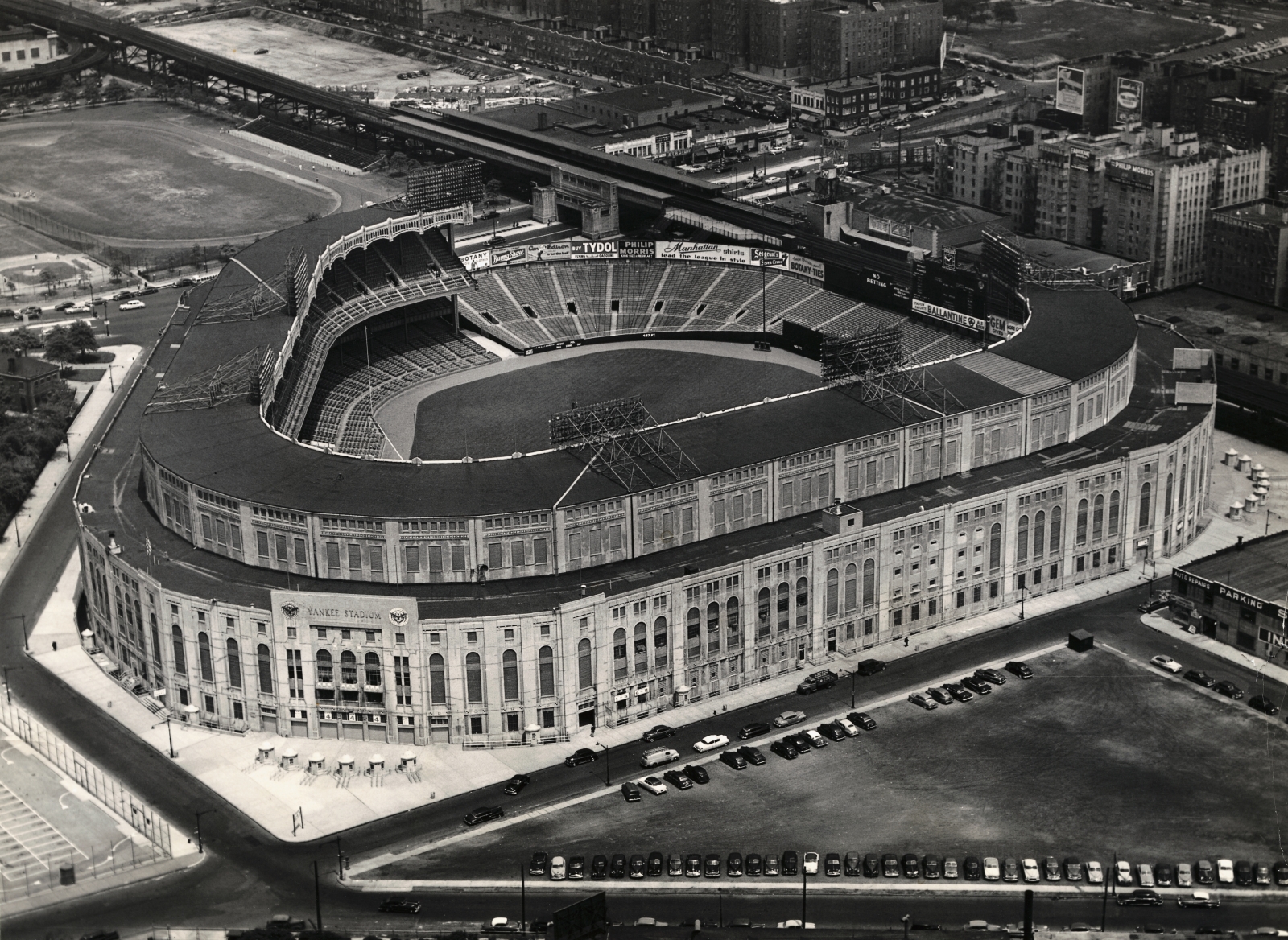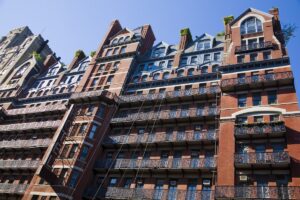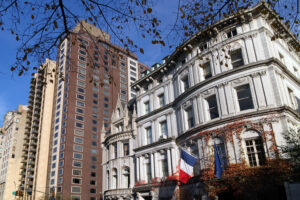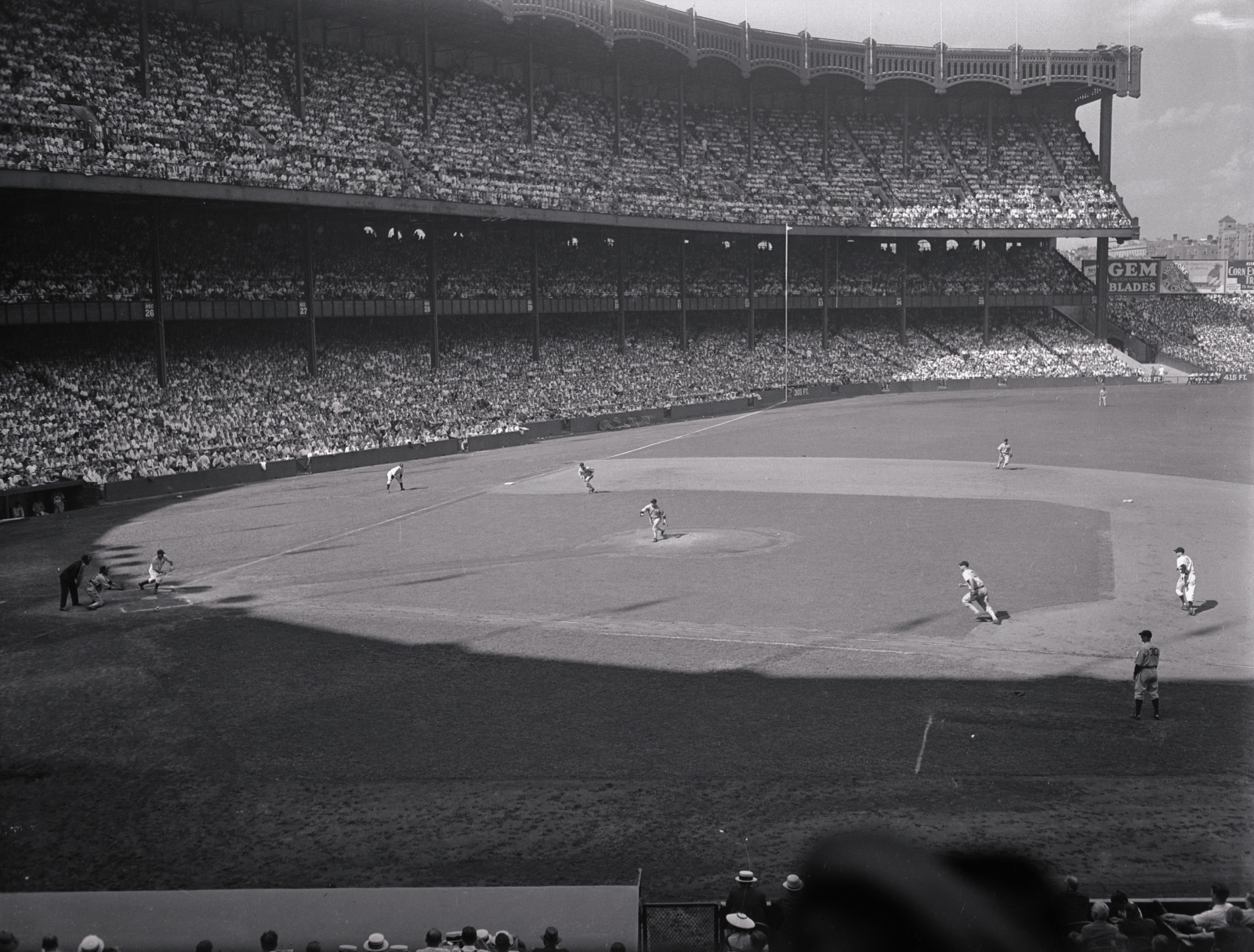
The Yankees play the Chicago White Sox at old Yankee Stadium, built in 1923. (Bettmann/Getty Images)
Let it not be said that real-estate-intoxicated New York forgets its glorious history. We are, at heart, a city of weepy sentimentalists, maintaining holy shrines to baseball stadiums that once gave joy to millions. In the case of the Mets’ Shea Stadium and old Yankee Stadium, that history resides right next to the new ballparks that have taken their place.
Shea Stadium Was the Mets’ Old Stadium
From 1964 through 2008, Shea Stadium existed in all its tacky charm in the borough of Queens, housing the Mets, who replaced the unfaithful Giants and Dodgers as the New York National League team.
The Queens stadium was named for lawyer William A. Shea, who put together the deal for a municipal stadium for the new team. As lucrative naming rights became the custom in sports, Shea was often asked how long his name would adorn the Mets’ ballpark. His answer was, in a few paraphrased words, “one day after I die.” In fact, he lived until 1991, and Shea Stadium lasted through the 2008 season.
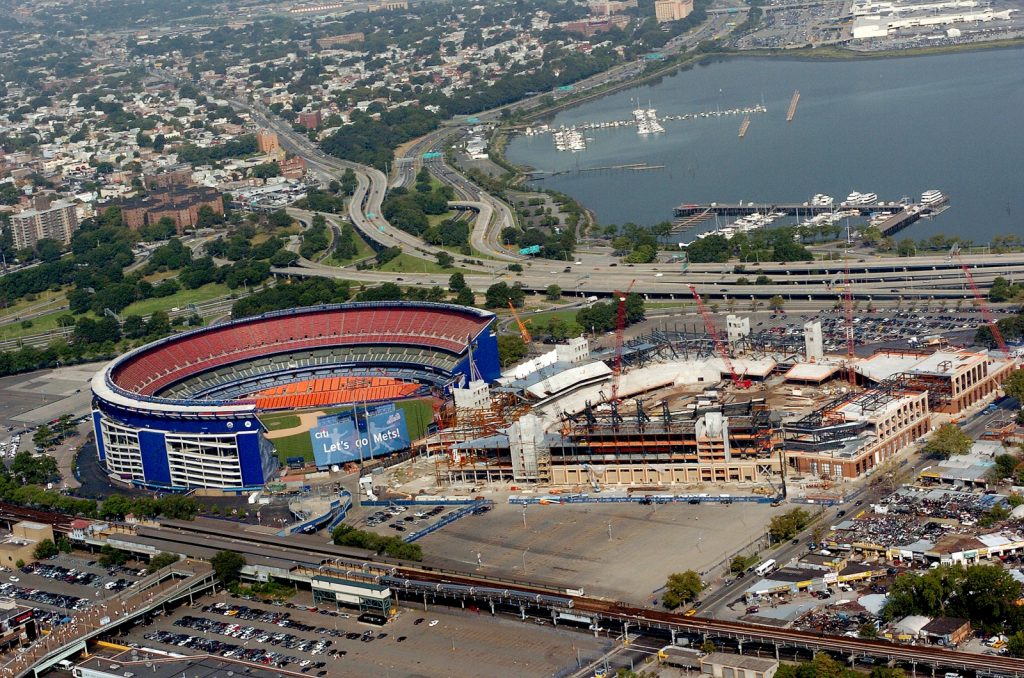
Flushing, Queens: Old Shea Stadium sits to the left of Mets ballpark Citi Field, shown under construction in 2007. (Debbie Egan-Chin/NY Daily News Archive via Getty Images)
In 2009, the city opened a new ballpark on the same reclaimed marshland near Flushing Bay, with naming rights purchased by Citibank, hence the name Citi Field — though many prefer to call it “Mets Field or “New Shea.”
The Mets’ ballpark itself is a mélange of architectural obeisance to former New York baseball sites the Polo Grounds and Ebbets Field. The overhanging right-field stand is in homage to a similar oddity in Tiger Stadium in Detroit, where the Wilpon family (The Mets’ majority owners) used to watch games.
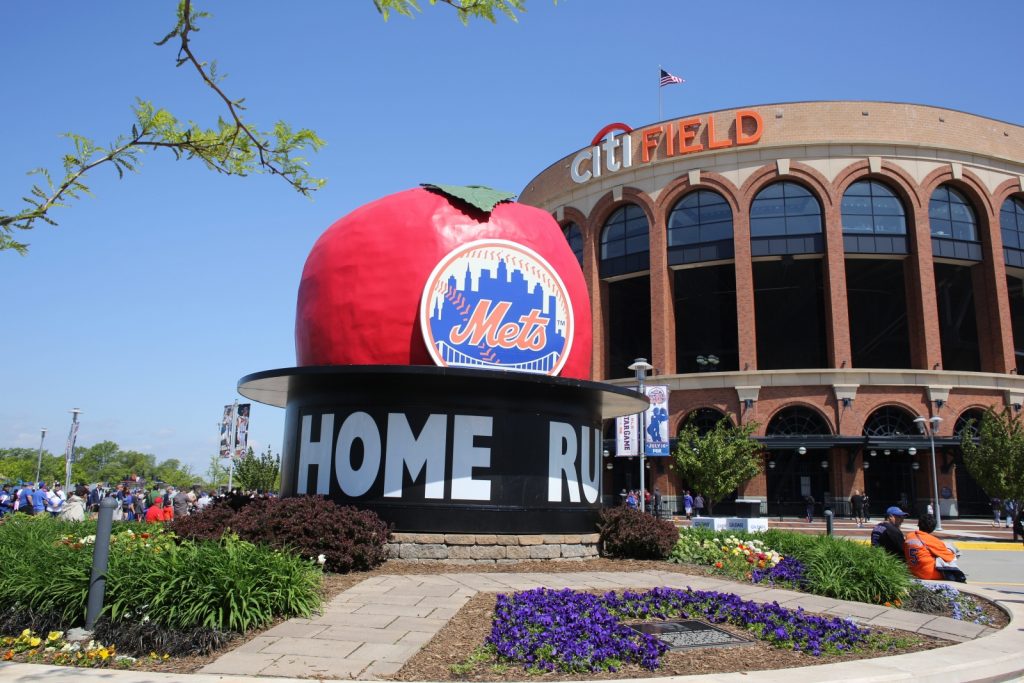
The Mets’ original “home run apple” is now located outside of the new stadium. (Tim Clayton/Corbis via Getty Images)
A rotunda behind home plate reflects a similar space in Brooklyn’s old Ebbets Field, the new one containing minimal reference to Dodgers, Giants or Mets history.
What about Shea Stadium’s old home plate, where Mookie Wilson had the most heroic at-bat in Mets’ history on a dampening October night in 1986? Cars spatter oil and sputter fumes over a plaque marking its location in the parking lot a few hundred feet west of the new stadium.
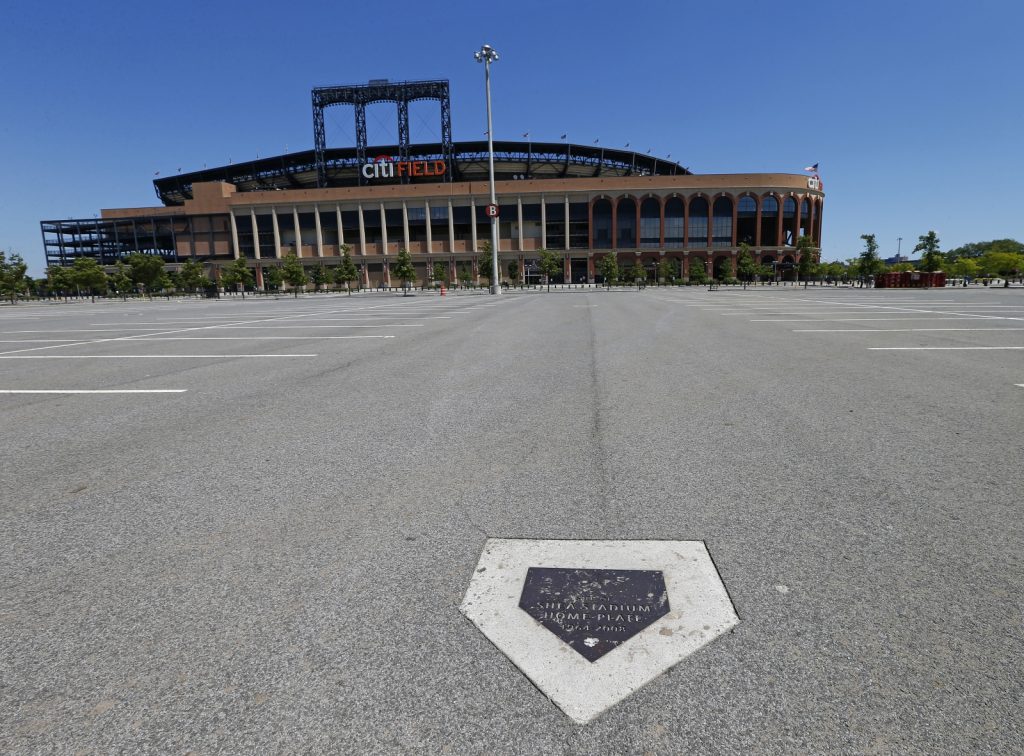
A plaque commemorates home plate at the former Shea Stadium. It’s located in a parking lot on the third base side of Citi Field. (Rich Schultz/Getty Images)
Old Yankee Stadium: From Babe Ruth to Derek Jeter
The past is honored a bit more openly in the Bronx, where Yankee Stadium existed, with upgrades and revisions, from 1923 (“The House That Ruth Built”) through 1973. The next two years, the Yankees slummed it at Shea Stadium, returning to an upgraded stadium in 1976 and playing there through 2008.
The old stadium had become thoroughly outmoded. As baseball kept expanding its playoff system — Reggie Jackson had been Mr. October, but by 2001, Derek Jeter became Mr. November — fans in puffy winter garb had to squeeze past each other in the narrow aisles. The restrooms were a horror.
In 2009, the city helped build a new ballpark, just to the north, across busy East 161 Street. The new Yankee Stadium has the name but not quite the imposing gravity of the old Yankee Stadium — those echoes of Lou Gehrig and Babe Ruth saying separate goodbyes, the cheers for Joe DiMaggio and Mickey Mantle. It seems patterned after amusement parks and convention centers and airport terminals.
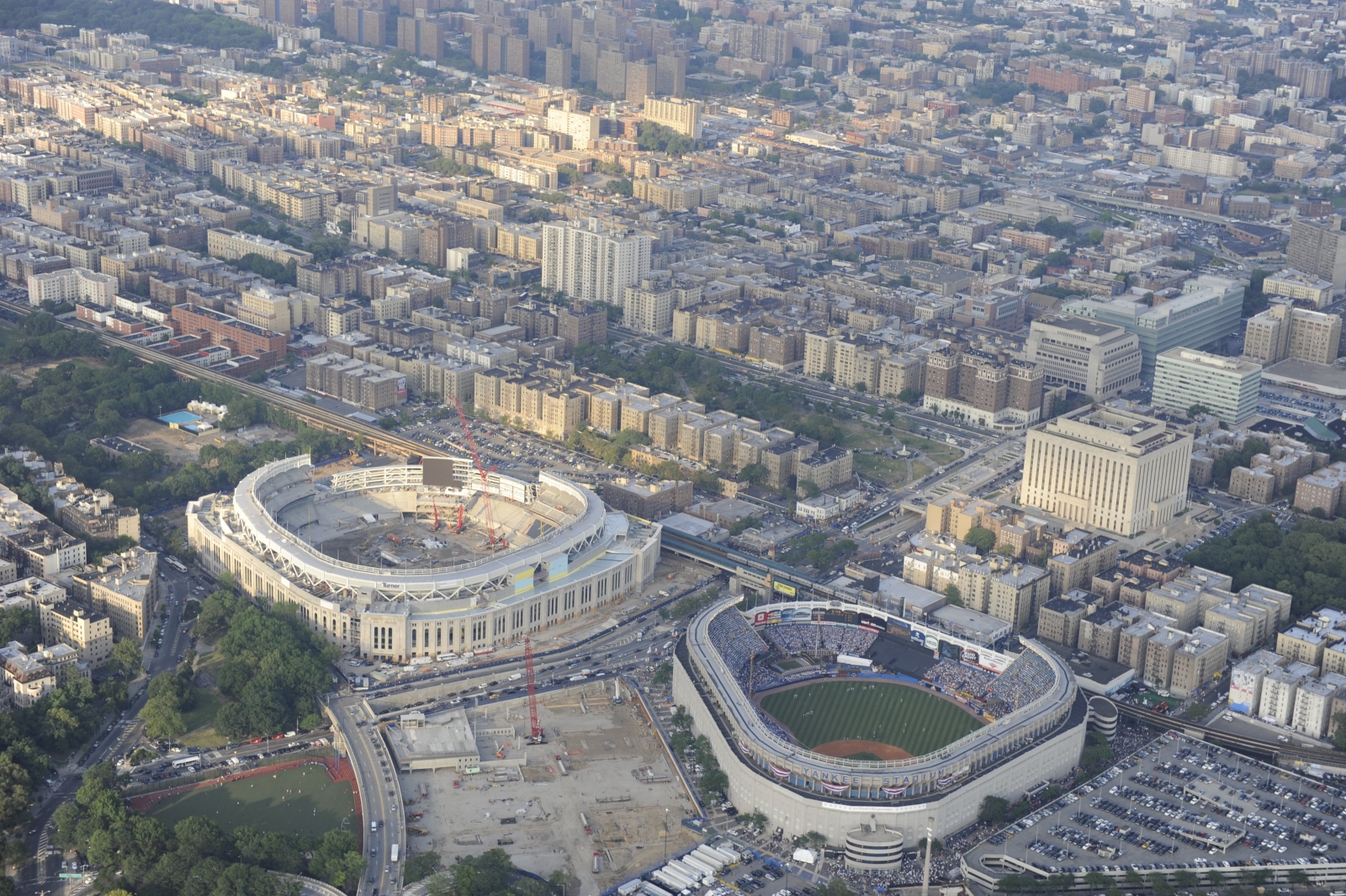
Old Yankee Stadium, on the right, and on the left, new Yankee Stadium under construction in the Bronx in 2008. (Rob Tringall/Getty Images)
But the Yankees of George M. Steinbrenner — The Boss — and city leaders did dedicate the site of the old Yankee Stadium to various playgrounds, including three grassy ball fields.
Heritage Field is laid out where Lefty Gomez, Whitey Ford and Mariano Rivera once pitched. Sandlot players of the city run and hit and throw with a direct view of the Bronx County Courthouse, which in the old ballpark was visible from the upper reaches behind home plate.
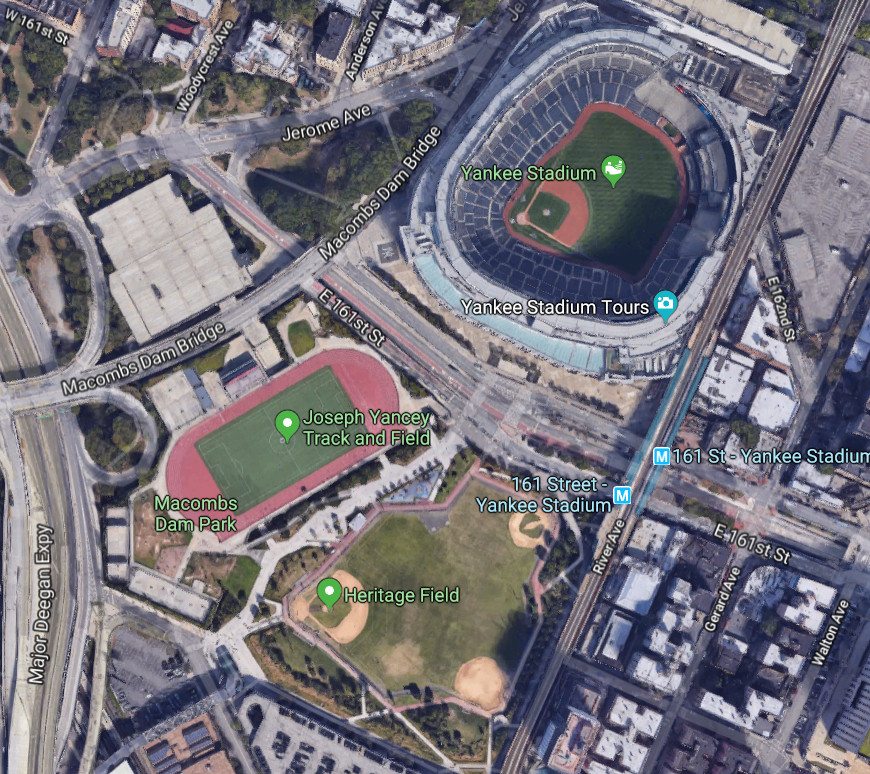
The site of the old Yankee Stadium is now a 10-acre public recreational site that includes three youth ballfields, and an adjoining track and soccer field. It’s called Heritage Field. (Google Maps)
Also, give the Yankees and city planners credit for this: Behind the outfield in this new Heritage Field is a modest version of the frieze that circled the upper ring of the old stadium.
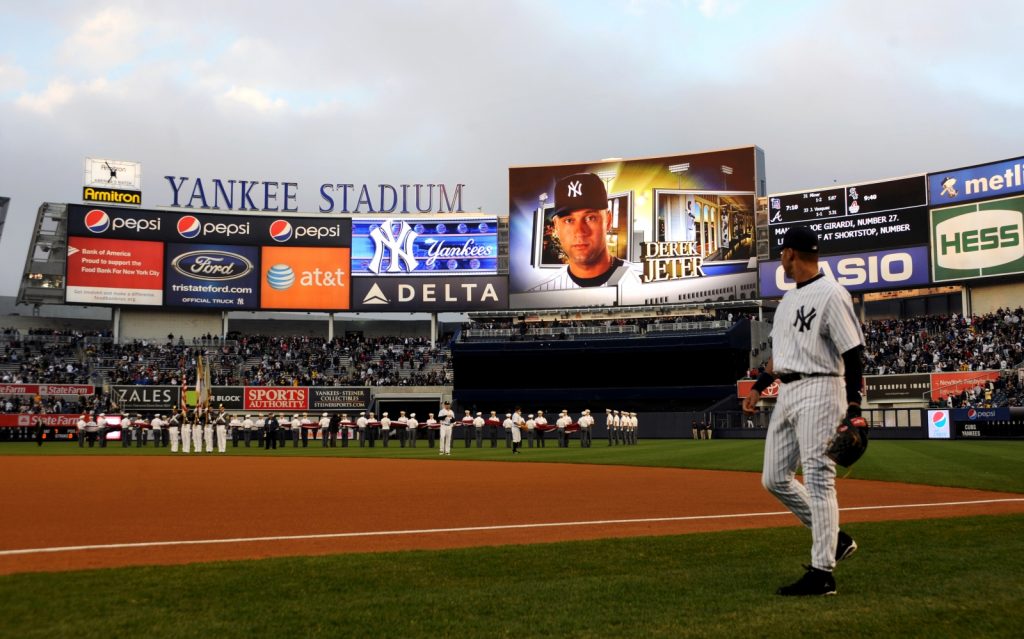
Yankee shortstop Derek Jeter looks at himself on the Jumbotron on April 3, 2009, the day after the new Yankee Stadium opened. (Photo by Ron Antonelli/NY Daily News Archive via Getty Images)
No fair ball was ever propelled out of the old Yankee Stadium in a Yankee game, although the great Josh Gibson is said to have hit one out during a Negro League game there in 1934, and he apparently hit one 580 feet in 1937, which somehow remained in the Stadium.
In May of 1963, Mickey Mantle blasted a homer that seemed destined for Montreal, or at least Westchester County, only to have it clang high off the façade in deep right-center field. Mantle forevermore referred to his shot as hitting the “fack-ard.” To this day, elderly Yankee reporters and fans refer to his shot off the “fack-ard,” a glowing tribute to The Mick.
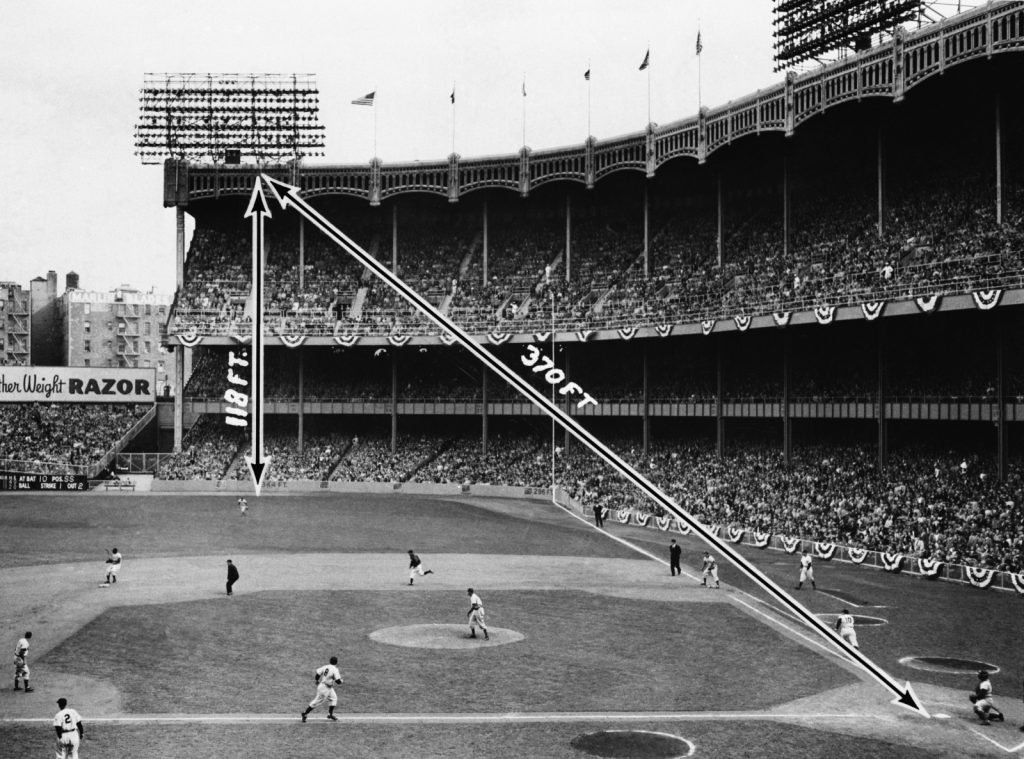
Converging arrows show the spot where a mammoth home run by Mickey Mantle almost cleared Yankee Stadium in May 1963. The towering shot struck the façade of the right field roof, just a few feet from going out of the stadium. (Getty Images)
Nowadays, sandlot players can enjoy the green grass of Heritage Field as well as a section of the old frieze. Good for the Yankees and the city to honor the past, as if to say, “There used to be a ballpark here.”
At this point, we cue up Frank Sinatra and the ode to ancient ballparks:
—
Send your NYC real estate stories and tips to StreetEasy editors at tips@streeteasy.com. You will remain anonymous. And hey, why not like StreetEasy on Facebook and follow @streeteasy on Instagram?
